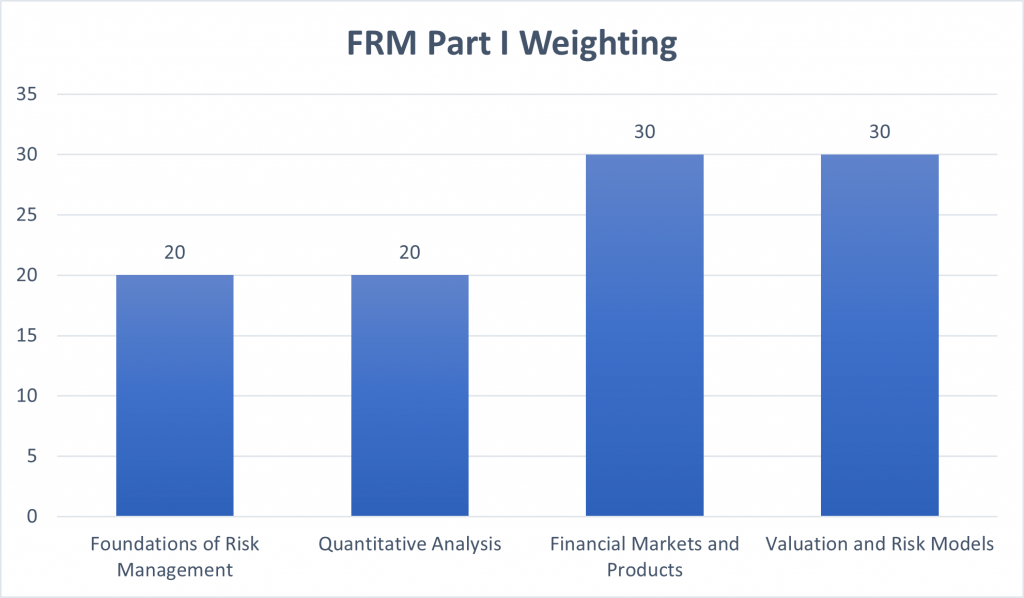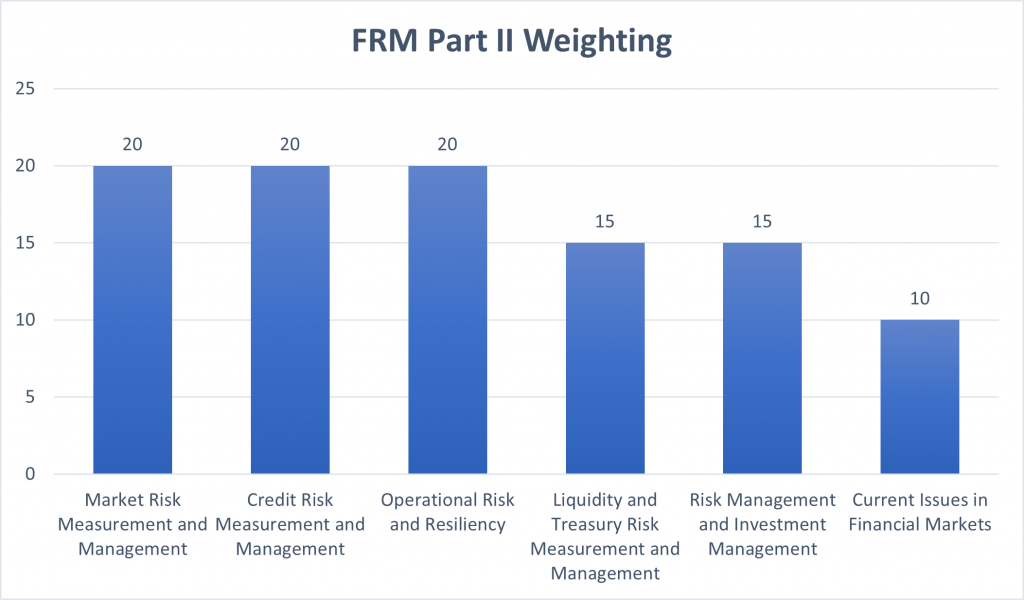GMAT Problem Solving: Technical Mathem ...
While there are several ways of solving mathematical problems in the quantitative reasoning... Read More
The world is currently in a dark place with the ongoing rise in coronavirus cases. The adverse effects brought about by the pandemic are despicable. People and industries alike have been affected. There is an imminent risk of companies going bankrupt, employees losing their jobs, to mention a few. A risk manager, one of the career paths that an FRM can follow, is mandated with the responsibility of, among other things, ensuring that a company stays afloat in times like this.
Financial Risk Management, FRM, is an exam certification offered by the Global Association of Risk Professionals, GARP. To attain an FRM charter, registered candidates have to attempt and pass both FRM Part 1 and FRM Part 2. By enrolling for and pursuing the FRM certification, candidates increase their expertise in the risk management field.
There are no educational prerequisites needed before registering for the FRM exams. A candidate, with or without a university education, can register to sit for an FRM exam. To register, candidates have to part with a one-time enrollment fee of $400. After that, for FRM Part I, candidates have to pay $425 for early registration, $550 for standard registration, and $725 for late registration. For FRM Part II, candidates have to pay $350 for early registration, $475 for standard registration, and $ 650 for late registration.
| Month | Dates |
| May | 8-21 |
| July | 10-23 |
| November | 13-26 |
| Month | Date |
| May | 15 |
| December | 4-10 |
Apart from the FRM Part II May exam date, which will be a written exam, all the other exams will be computer-based. This is one of the significant changes the GARP made as a result of Covid-19. Other changes that came about in 2020 include:
The changes made should not be confused for a less challenging exam. To maintain its reputation and standards, the GARP has maintained the rigor, breadth, structure, and length of the FRM exams.
It is important to note that candidates are free to attempt both FRM Part I and II on the same day. However, Part II will only be marked upon passing Part I. Upon passing both parts, candidates have to present relevant work experience, in a risk field, of at least two years before been awarded an FRM charter.
Both FRM Part I and Part II are multiple-choice exams. FRM Part I comprises 100 questions, whereas FRM Part II consists of 80 multiple questions; both parts have to be attempted in four hours. All the questions in an FRM exam carry the same weight. It should be noted that there are no penalties given for wrong answers. For this reason, a candidate can opt to ‘guess’ instead of leaving a question blank. ‘Guess” as in use elimination method to arrive at the best of the choices provided.
FRM Part I and Part II topics both revolve around risk.
| Topic | Exam Weight (%) | Number of Questions |
| Foundations of Risk Management
Quantitative Analysis Financial Markets and Products Valuation and Risk Management |
20 20 30 30 |
20 20 30 30 |
| Total | 100 | 100 |

| Topic | Exam Weight (%) | Number of questions |
| Market Risk Measurement and Management
Credit Risk Measurement and Management Operational Risk and Resiliency Liquidity and Treasury Risk Measurement and Management Risk Management and Investment Management Current Issues in Financial Markets |
20 20 20 15 15 10 |
16 16 16 12 12 8 |
| Total | 100 | 80 |

The average study period reported by candidates and already qualified FRMs is 240 hours for each of the FRM Parts. However, this time is subject to a person’s knowledge of the FRM exams’ topics. It could be shorter or longer, depending on a person’s prior understanding of the topics tested. Candidates with prior knowledge have reported having used less time, 100 hours, to prepare for the FRM exams. Those with no prior knowledge have used as much as 400 hours for the same. The topics of the various parts, as shown above, should not mislead candidates into believing that they can be covered in a shorter time. In as much as FRM examines a smaller number of topics compared to CFA® exams, the topics are much narrower and much more detailed. In addition to that, the topics take a more mathematical approach. They, therefore, require a great deal of understanding, practice, and more practice.
There is a notable difference between understanding concepts, especially mathematical concepts, and applying them in an exam like manner; this is why candidates need to practice. Practice and get acquainted with answering styled exam questions. It is the ticket to a good score on the actual exam.
Both CFA and FRM are unrivaled professional certifications in the field of finance.
For both CFA and FRM, to qualify for a charter, an individual has to attempt and pass a set of challenging exams, in addition to providing proof of relevant work experience.
| FRM Exams | CFA Exams |
| No education requirements. Any individual, with or without a college education, can register for FRM exams. | An individual should be at least in his or her final year of campus education to qualify to register for CFA. |
| Consists of two sets of exams (FRM Part I and II) | Consists of three levels of exams (CFA Levels I, II, and III) |
| A candidate needs to provide proof of 2000 hours of work/two years before a charter can be awarded. | A candidate needs to provide evidence of 4000 hours of work, with 2000 being in an investment decision making role before a charter can be granted. |
| FRM exams take more of a narrow than a broad approach. Most chapters concentrate on risk management concepts and tools. | CFA exams take more of a wide than a narrow approach. For example, CFA exams include Economics and Financial Reporting. |
| FRM Part I and Part II can be attempted on the same exam cycle. | The next level of the CFA exam can only be attempted upon passing the current level. |
| Exams are attempted in four hours | Exams are attempted in two hours and fifteen minutes. |
Most companies prefer to hire employees who are members of at least one professional body. Besides having strict registration and membership requirements, most professional bodies offer very challenging and rigorous exams. GARP is not an exception.
So yes, FRM exams are quite tricky. Candidates who’ve pursued both FRM and CFA found FRM I to be more challenging than CFA level I. The November 2019 pass rate of 45.9% (FRM Part I) and 58.6% (FRM Part II) should tell you just how much challenging FRM exams are.
However, this should not scare you from attempting professional exams, and in particular, the FRM exams. These exams increase your knowledge and expertise in your chosen field and, as a result, increase your chances of securing better jobs or getting promotions. Our role as AnalystPrep is to ensure that you get the best preparation tools that will enable you to pass your FRM exams on your first attempt. You may consult this page to know more: https://analystprep.com/frm-part-1-pass-first-attempt/
In a world full of uncertainties, it shouldn’t be hard for an FRM, whose primary role is to assess, quantify, and manage risk, to secure a job. An FRM works in various risk departments of financial institutions, banking industries, trading companies, wealth management firms, asset management firms, and credit rating agencies. ICBC, HSBC, PWC, KPMG, and Citigroup are some of the top global companies that employ FRMs. The top global banks that hire FRMs include ICBC, China Construction Bank, Wells Fargo, Bank of America, Bank of China, and JP Morgan Chase Bank.
On average, an FRM earns an annual salary of $101,000. Of course, the amount can be higher or lower depending on several things, including the specific risk department handled by the FRM, job category, and hierarchy in the firm.
As you prepare for your FRM exams, you must note the below-cited reasons as to why most candidates, as seen in the 2019 pass rates above, fail to pass their exams;
FRM is the future of finance. There will always be a need to assess and maintain risk in an organization. As a result, there will always be a need for a Financial Risk Manager. Whether you should pursue FRM or not is a personal decision. However, you should know that the risk management field is a growing field, and as with any growing field, it promises a lot of opportunities.
While there are several ways of solving mathematical problems in the quantitative reasoning... Read More
The most common reading comprehension questions you will find on the verbal section... Read More